With foodies around the world touting the flavors and textures of whole grains, many of us may feel perplexed when it comes to choosing our grains. It can be even more confusing when we add grain types such as “gluten free,” “whole grain” or “multi-grain.” To help understand the wide-range of benefits from whole grain foods, below we are discussing the some interesting facts on the most important grains.
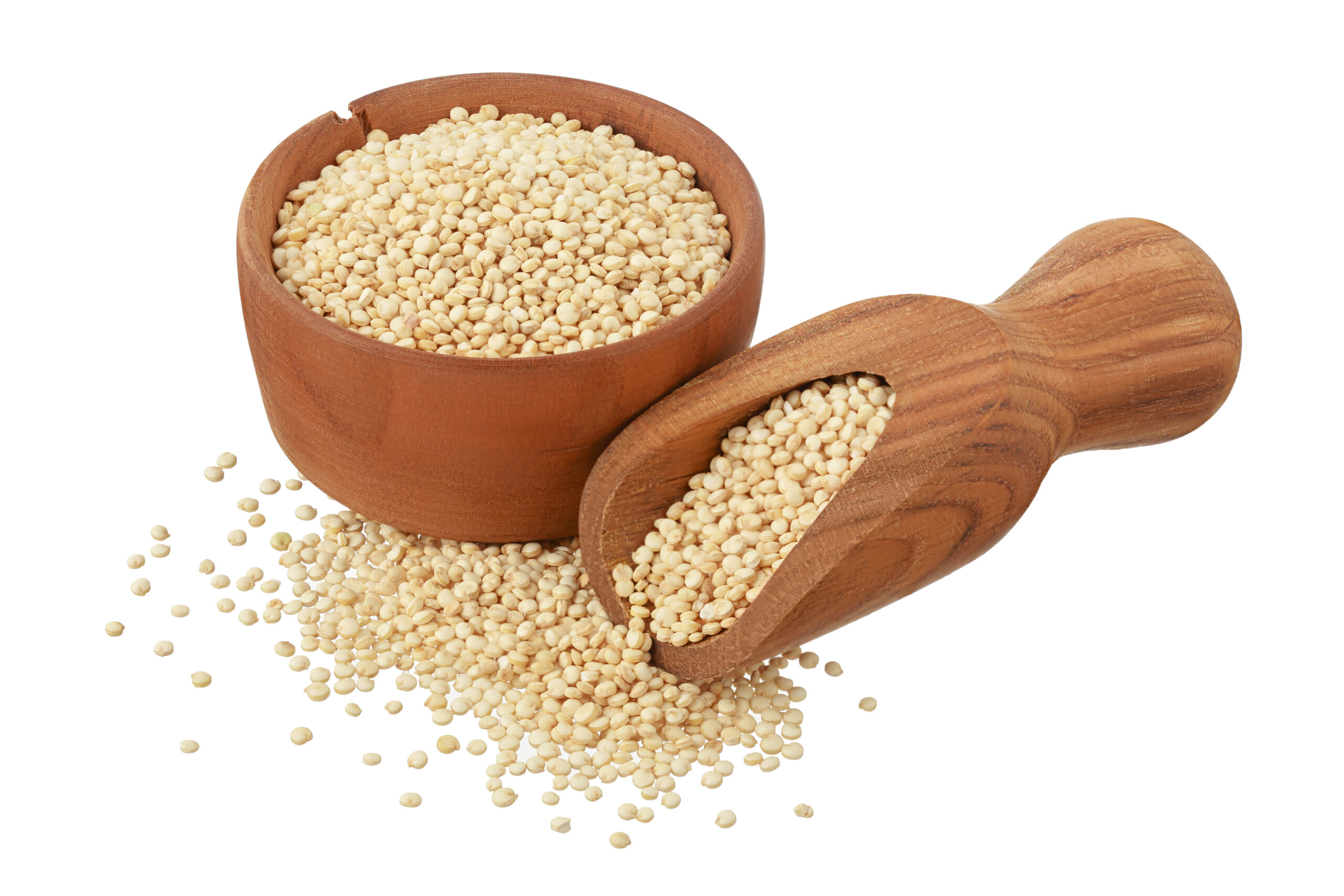
QUINOA
Quinoa grain is the edible seed of a flowering plant in the amaranth family. The seeds are about 2mm in diameter and vary in color from red to white or black, depending on the cultivar. It’s highly nutritious, with almost double the fiber content of other grains. This seed has a low glycemic index and is high in protein, making it a great option for those looking to reduce their carbohydrate intake.
Raw, uncooked quinoa is 13% water, 64% carbohydrates, 14% protein, and 6% fat. Quinoa grains are gluten free and easy to use, needing less cooking time than other similar grains. They can used served in salads, soups, cereals, as a thickener, and in gluten free bread.
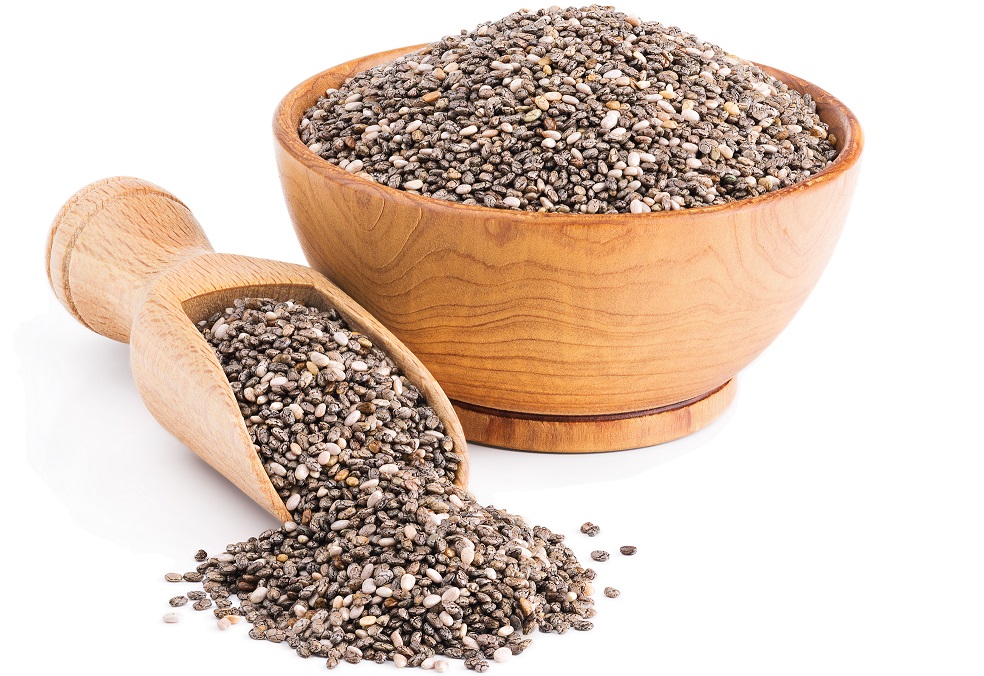
CHIA SEEDS
Chia seeds are the edible seeds of a flowering plant in the sage family, native to Mexico. Chia seeds are oval, flat, and gray with black and white spots, having a diameter around 1-2mm. These seeds are hydrophilic, absorbing up to 12 times their weight in liquid when soaked and developing a coating that gives chia-based foods and beverages distinctive gel texture.
Chia seeds are non-GMO and naturally free of gluten, as well as having a low carb content, they contain 40% fiber – making them one of the best sources of fiber in the world and they are also high in quality protein. Chia is part of a staple diet for several South American countries, including Argentina, Bolivia, and Mexico, normally used in nutritious drinks and food.
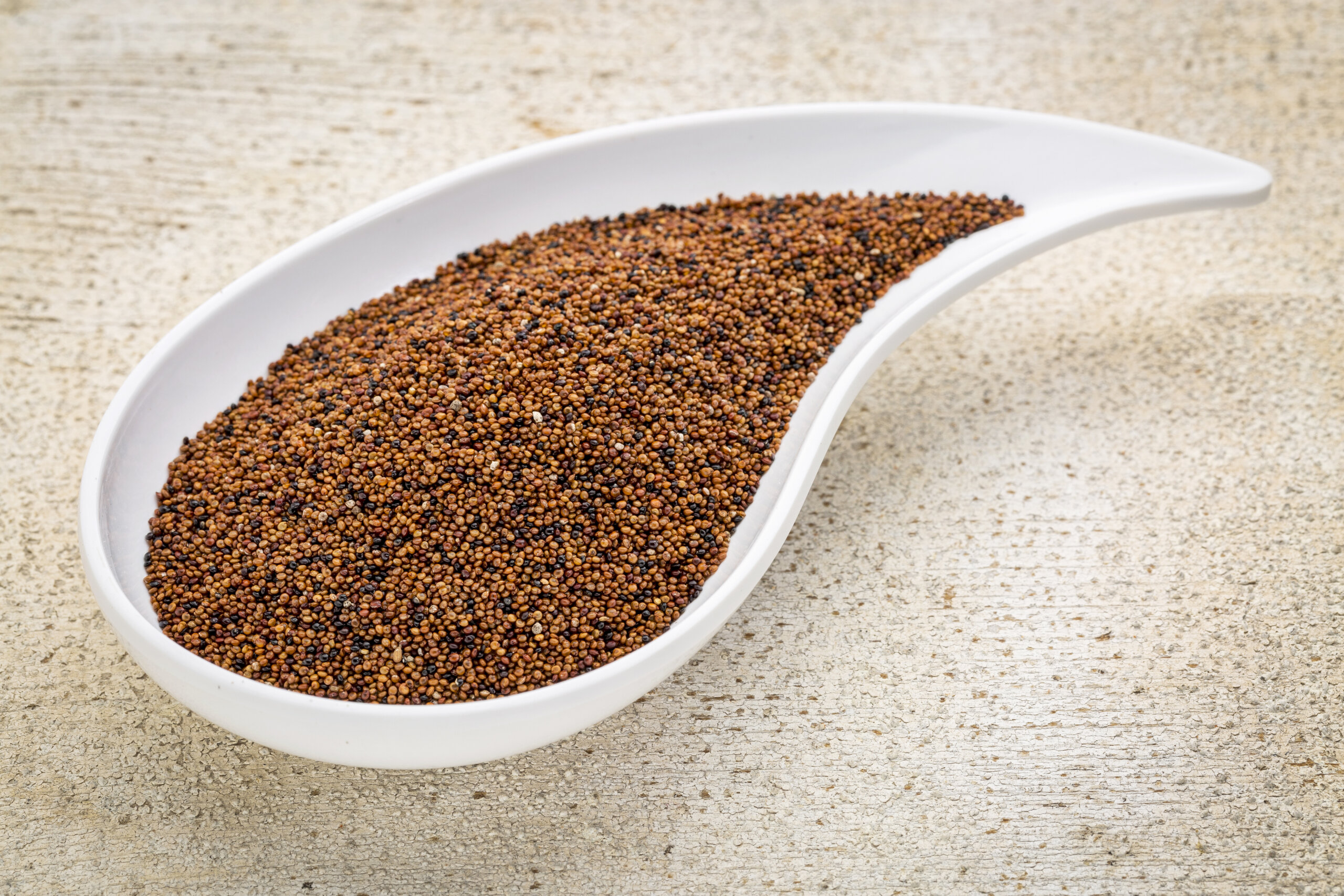
KANIWA
Kaniwa is a grain from a species of goosefoot, closely related to quinoa, native to the Andean region. It is a small black or brown seed with a diameter from 0.5 to 1.5mm. It has a sweet nutty taste and can be milled to make a flour, which can be used in making bread, pastry, noodles, sweets, pastry, and in baby food.
It is rich in calories and protein and has a high nutritional value, with similar properties to quinoa. Kaniwa is a pseudo-cereal crop that grows well at high altitudes, where millet and quinoa do not grow, and is grown in South America. It is a good source of protein, iron, calcium, and phenolic antioxidants, beneficial for heart health.
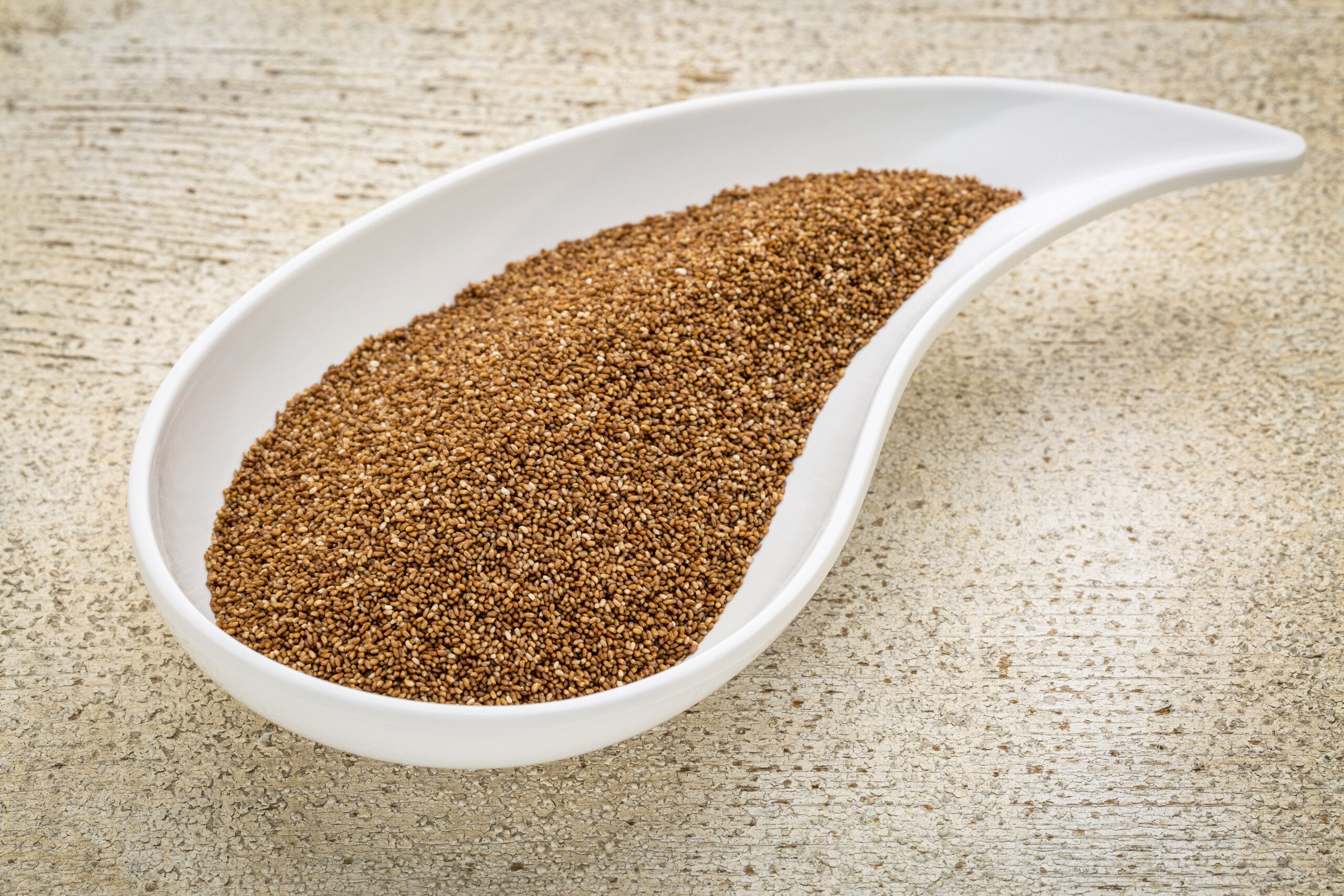
TEFF
Teff is an annual grass, native to the Horn of Africa, cultivated for its edible seeds. Teff seeds are tiny, less than 1mm in diameter, and one thousand grains weigh less than 0.3g. It is an especially important cereal crop to this day in Ethiopia and Eritrea, the plant being harvested both for its seed and also for the grass for feed for cattle.
Teff seeds are rich in fiber, manganese, slow-digesting carbs, resistant starches and have a relatively low glycemic index. It is used as the main ingredient for injera, eaten with ground pulses or meat, as porridge, or in alcoholic drinks or beer, and also in baby food. It is gluten free and has been developed for use as a baking flour and for pasta.
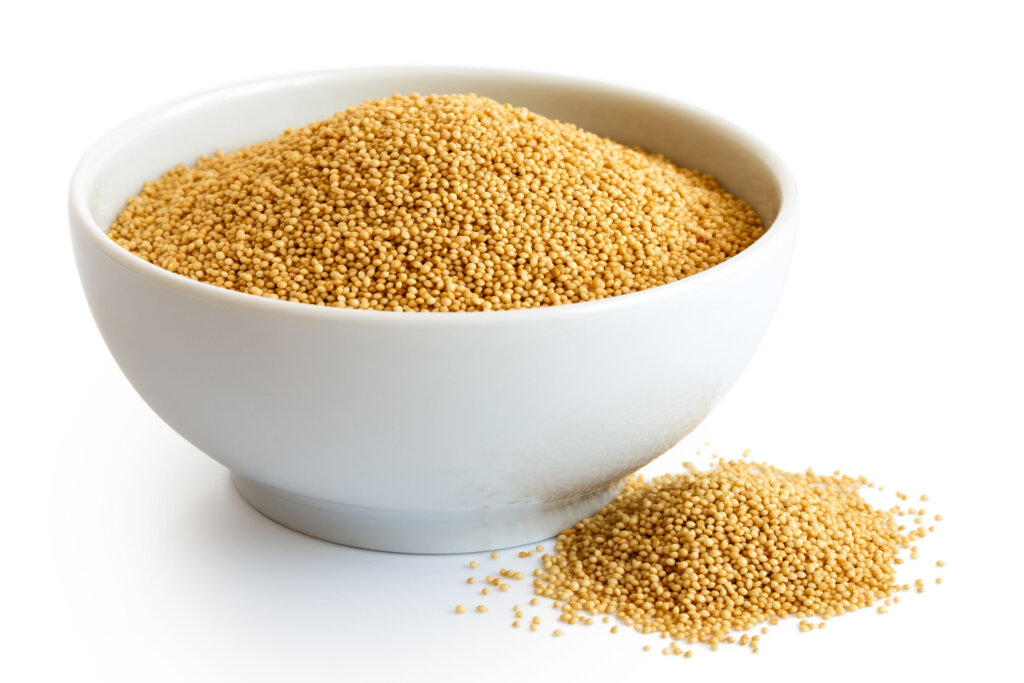
AMARANTH
Amaranth seeds are an ancient grain, used by the Aztecs and other ancient cultures. They are harvested from the amaranth plant, which is classified as a pseudocereal. Amaranth seed is available widely in health shops, being processed as popped, ground, and flaked, to be used in cereals, snacks, energy bars, in traditional dishes, and in baking.
The grains can also be extruded to form amaranth flour and oil, which is a pressed seed oil used commercially. Amaranth is a nutritious, gluten-free grain that provides plenty of fiber, protein, and micronutrients. It has also been associated with several health benefits, including reduced inflammation, lower cholesterol levels and increased weight loss.
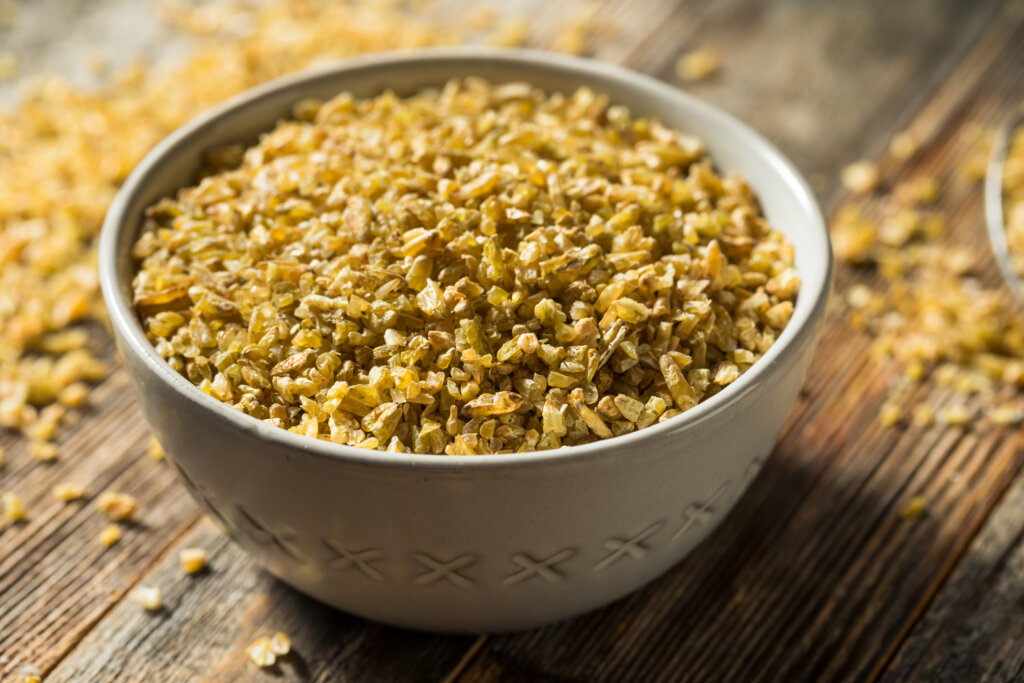
FREEKEH
Freekeh is a cereal grain derived from green durum wheat that is roasted and rubbed to create its flavor. The wheat is harvested while it is still green, then piled and dried in the sun, burned to get rid of the straw and chaff, and then threshed and sun-dried. Finally, the seeds are cracked into smaller pieces.
Green wheat Freekeh is 100% natural – no preservatives, additives or pesticides are ever used. Freekeh is high in fiber. It contains prebiotics that help to nourish the beneficial bacteria that live in the gut. It also has a high calcium, zinc and iron content. It is free of saturated fat, cholesterol, and sodium. This ancient grain is an excellent source of manganese, providing 70% of your recommended daily amount.
[su_divider top=”no” divider_color=”#726c6d” size=”7″ margin=”5″]
[su_button url=”https://www.facebook.com/tradelinksainternational/?view_public_for=105757601162821″ target=”blank” style=”flat” size=”5″ icon=”icon: facebook-f” text_shadow=”0px 0px 0px #000000″] [/su_button] [su_button url=”https://www.linkedin.com/company/tradelink-sa/?viewAsMember=true” target=”blank” style=”flat” size=”5″ icon=”icon: linkedin” text_shadow=”0px 0px 0px #000000″] [/su_button] [su_button url=”https://www.instagram.com/tradelinknz/” target=”blank” style=”flat” size=”5″ icon=”icon: instagram” text_shadow=”0px 0px 0px #000000″] [/su_button] [su_button url=”https://www.youtube.com/channel/UCewEsyFy0Y_1MdjwhsXvT0w” target=”blank” style=”flat” size=”5″ icon=”icon: youtube” text_shadow=”0px 0px 0px #000000″] [/su_button]
[su_youtube_advanced url=”https://www.youtube.com/watch?v=LCEkNZdMi04″ height=”200″ responsive=”no” fs=”no”]


